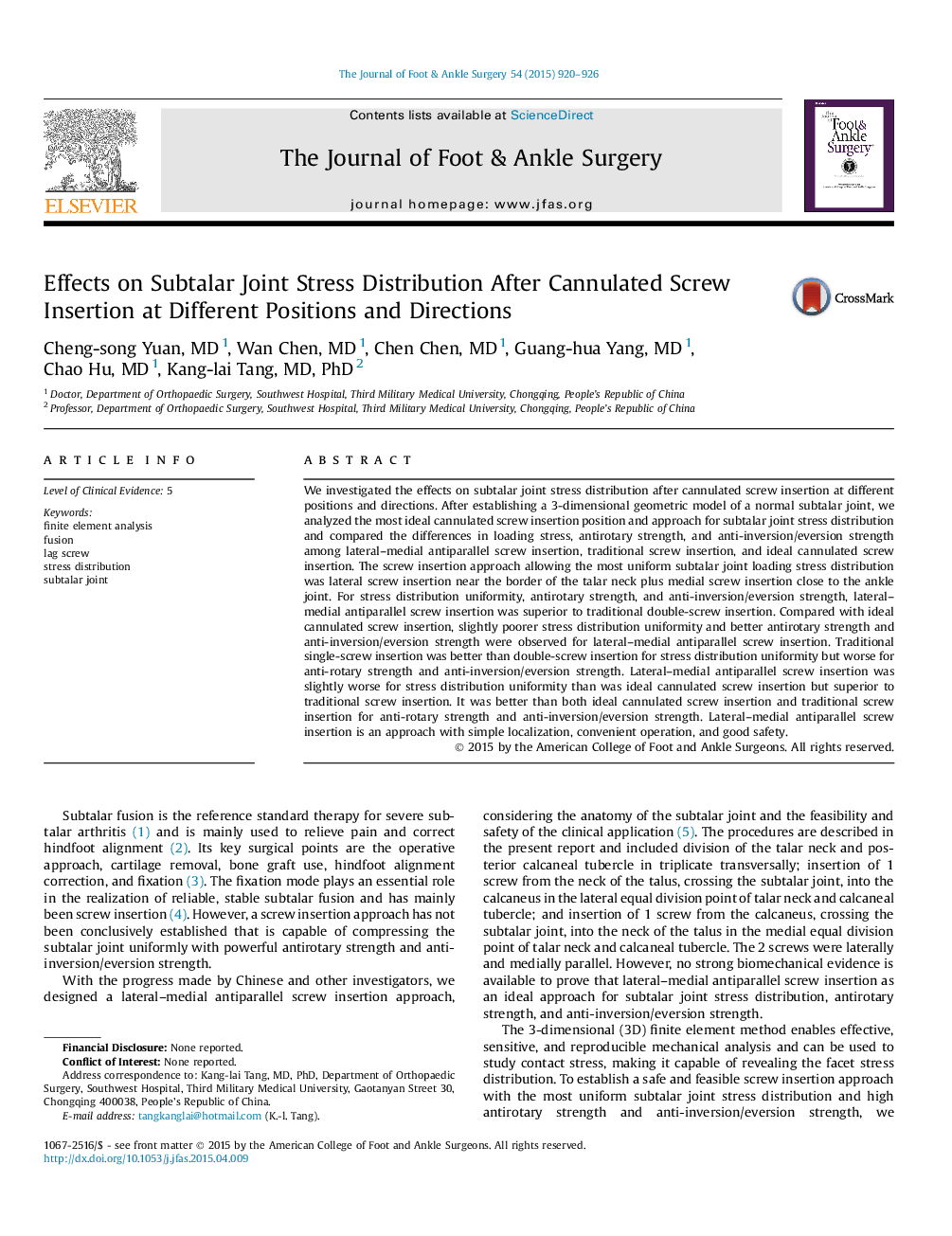| کد مقاله | کد نشریه | سال انتشار | مقاله انگلیسی | نسخه تمام متن |
|---|---|---|---|---|
| 2713017 | 1565527 | 2015 | 7 صفحه PDF | دانلود رایگان |

We investigated the effects on subtalar joint stress distribution after cannulated screw insertion at different positions and directions. After establishing a 3-dimensional geometric model of a normal subtalar joint, we analyzed the most ideal cannulated screw insertion position and approach for subtalar joint stress distribution and compared the differences in loading stress, antirotary strength, and anti-inversion/eversion strength among lateral–medial antiparallel screw insertion, traditional screw insertion, and ideal cannulated screw insertion. The screw insertion approach allowing the most uniform subtalar joint loading stress distribution was lateral screw insertion near the border of the talar neck plus medial screw insertion close to the ankle joint. For stress distribution uniformity, antirotary strength, and anti-inversion/eversion strength, lateral–medial antiparallel screw insertion was superior to traditional double-screw insertion. Compared with ideal cannulated screw insertion, slightly poorer stress distribution uniformity and better antirotary strength and anti-inversion/eversion strength were observed for lateral–medial antiparallel screw insertion. Traditional single-screw insertion was better than double-screw insertion for stress distribution uniformity but worse for anti-rotary strength and anti-inversion/eversion strength. Lateral–medial antiparallel screw insertion was slightly worse for stress distribution uniformity than was ideal cannulated screw insertion but superior to traditional screw insertion. It was better than both ideal cannulated screw insertion and traditional screw insertion for anti-rotary strength and anti-inversion/eversion strength. Lateral–medial antiparallel screw insertion is an approach with simple localization, convenient operation, and good safety.
Journal: The Journal of Foot and Ankle Surgery - Volume 54, Issue 5, September–October 2015, Pages 920–926